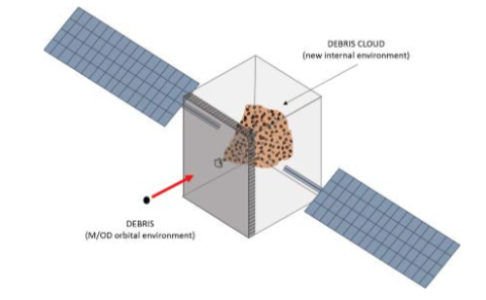Simplified models for spacecraft vulnerability assessments in early design phase

All spacecraft in Earth orbit are exposed to the risk of impact with Micrometeoroids and Orbital Debris (M/OD). Because of the large collision velocities, Hypervelocity Impacts (HVI) with M/OD may cause significant damage to various subsystems and components up to mission failure.
In particular, space debris are man-made objects which include collision and/or explosion fragments, other fragments resulting from surface degradation, mission related elements (e.g. lens covers, launch adaptors, etc.), out-of-life satellites and launchers upper stages. Space debris mass is therefore extremely variable, from fractions of milligrams to few tons, and the consequent impacts on operational spacecraft can have very different effects that are broadly classified into two distinct categories:
• Non-catastrophic impacts, in which a small piece of debris can eventually cause a local perforation of the spacecraft hull. In this case, a debris cloud is ejected into the vehicle and can produce damage to internal equipment and/or lead to a failure of critical components.
• Catastrophic impacts, in which the debris mass (and hence impact energy) is large enough to produce the complete shattering of the spacecraft (or a relevant part of it).
